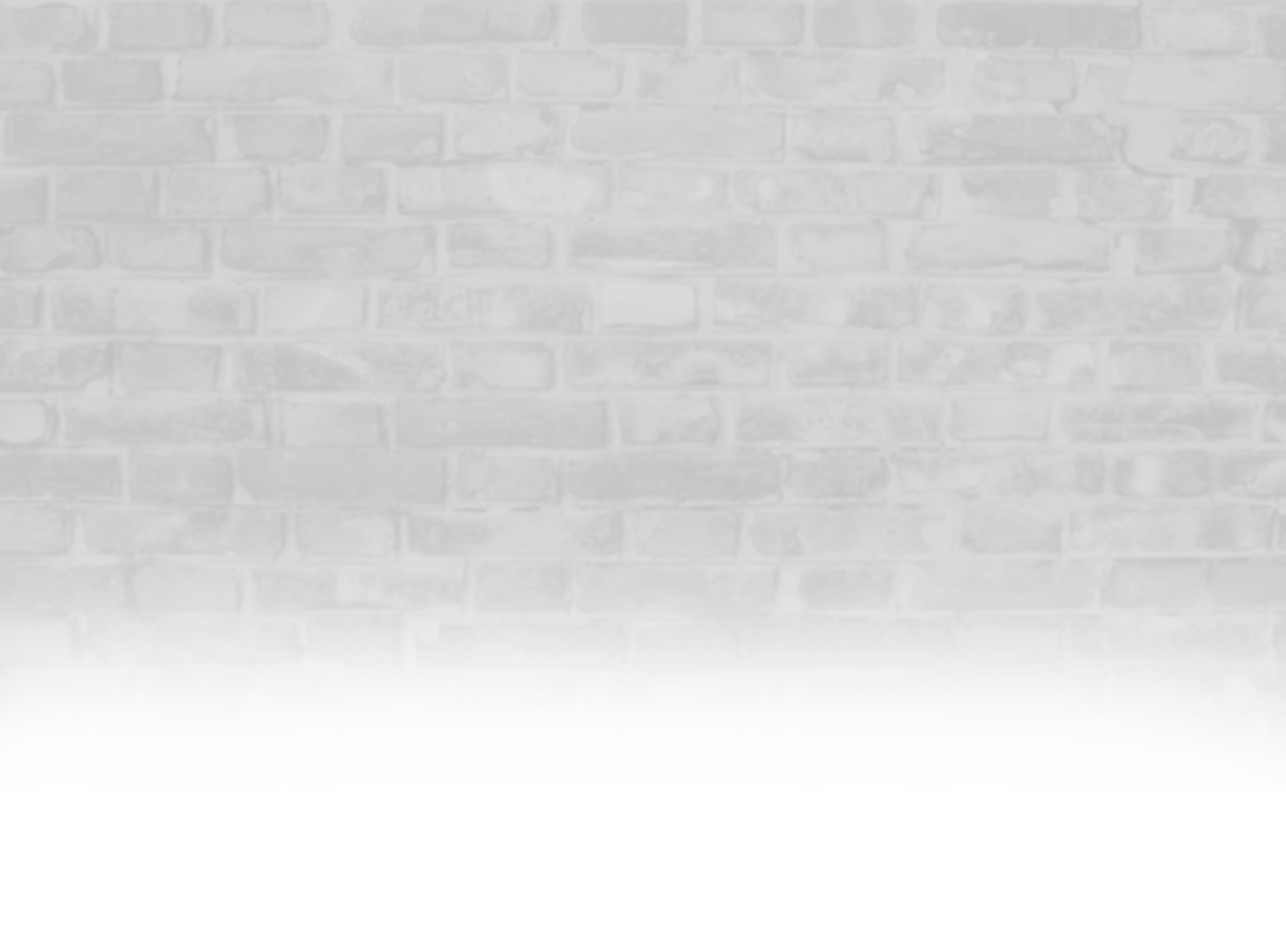Termite Treatments
We offer a comprehensive range of services for termite treatment Brisbane wide in Warner, Caboolture, North Lakes and surrounding areas.
The first step in a termite treatment program is to treat the active termites within the home or garden. The treatment option offered will depend on factors such as the location of the activity and if there has been any disturbance prior to the start of the treatment.
Dusting Treatments
The dusting process is usually the first stage of a Termite Colony Control Treatment. The second stage involves placement of a Termiticide Treated Zone around the home. In some cases, dust can also be used in monitoring stations when significant activity is discovered. Dusting by itself is a very risky undertaking as termites can readily re-infest. For dusting treatments we use Termidor Dust, small holes are made in timber that has been attacked or into the termite trails, dust is then applied into the workings through the holes by means of a small puffer and the holes covered to re-seal the workings and to prevent dust escaping and to reduce disturbance of the termites. Another inspection is then undertaken in 2-3 weeks to check for activity.
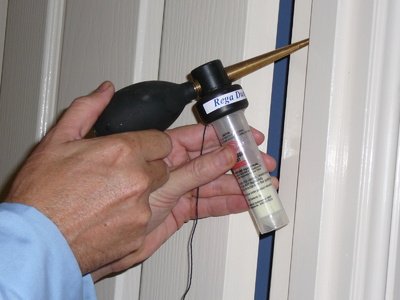
Foaming Treatments
The foaming equipment uses air to expand a mixture of finished product, thus enabling the product being foamed to increase the contact surface area. This adds a lot of versatility to a liquid pesticide. We can now use known effective liquids to perform very thorough void treatments and active gallery/ nest injections. The product expansion ratio of 20 to 1 fills gaps and crevices, delivering a lethal dose of Termidor directly to the termites and leaves a long lasting residual.
This technology has certain advantages even when compared to dust:
- The smaller the access holes the better. This is because foam forces itself through the entire space, you will get amazing horizontal or vertical coverage without needing a large access hole. As long as the hole is fairly "airtight," the foam will continue to force itself outward until it can't penetrate any further, giving complete and even coverage.
- Both liquids and dust have a tendency to get over-applied. When we apply liquids, we are bound to have a runoff. Dust have a habit of finding holes that will end up contaminating a nontarget contact surface.
The greatest advantage of foams is their ability to get great penetration. It can be used doing pinpoint treatments to small insect breeding sites that are not accessible by other methods.
Foam treatments and other technologies will lead to more targeted treatments for termite control. Our termite and pest control specialists can provide a comprehensive termite treatment North Lakes which can incorporate foam treatments.
Foaming Equipment
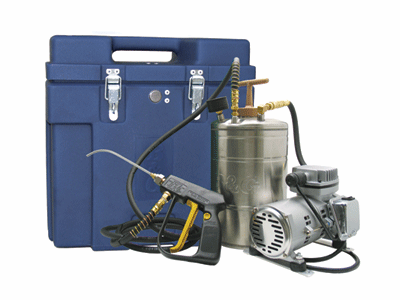
Dusting or Foaming Treatments?
Dusting or Foaming Treatments are usually the 'First Stage' of a 'Two Stage' Treatment with the second stage being the placement of a Termiticide Treated Zone into the ground to impede further attack. If you elect to carry out a limited treatment involving Dusting or Foaming without the second stage Treated Zone being installed then the dusting or foaming may not on its own be effective.
Whilst the dust or the Termiticide contained in the foam can eventually result in eliminating the particular termite colony which is infesting your premises at the time, the process is slow and can take 6 months to achieve this result. Foaming is the better option because the foam penetrates further than dust and also fills all cracks and crevices. The benefit of a Two-Stage Treatment is that on completion of the work a Termiticide Treated Zone is placed around the structure versus a Dusting or Foaming where only the activity is treated and there is no ongoing residual soil zone to protect from attack by other termite colonies in the area.
Dusting or Foaming is also a limited process. At the time that our proposal is put forward to you, we will nominate the number of visits we will make and the cost. Beyond that, there is no ongoing free service provided. If you find evidence of further termite activity, even in the same area where we have previously dusted or foamed, there will be additional service costs to treat that activity.
Termite Soil Treatments
Installation of External Termite Barriers / Treated zones.
Since termites enter through the soil, the Australian standard requires all soil next to the structure be treated (both under the floor/slab and around the external perimeter of the home) to provide a complete treated soil barrier/zone. With concrete slab on ground homes, in particular, it is frequently found that an external perimeter treatment around the outside of the home alone is adequate to protect the building. Especially if the slab was constructed properly to AS 2870.
For this reason, an external perimeter may be considered as a possible first step in a termite control program. With this style of treatment, the slab of the home forms a physical barrier. Sometimes termites may still enter through pipe penetrations or other cracks in the concrete slab. This will render any Free Service Period null and void since we will need to perform the above additional requirements to protect your property.
Where possible we will trench along an external wall. This is an important step as we can remove any rubble, in most cases, we replace the removed soil with clean fill (brickies loam) and treat as we backfill.
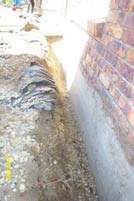
Footings are cleaned to remove excess motar. This is a very important step in any termite or white ant treatment as Termites often travel between this excess brickies mud and the top of the footings.

The footings and bricks are then inspected for any cracks/gaps (if found these are then filled).

Service entry points such as phone cables and plumbing where possible are inspected for possible termite entry points. We then replace the removed soil with clean sand. As the sand is placed in the trench we apply the Termiticide. Thus the new barrier/treated zone is free from contamination from lumps of clay, rocks, wood chip etc
Pavers are lifted and replaced after as part of our termite treatment Brisbane.

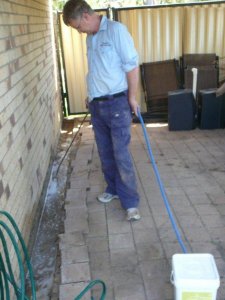
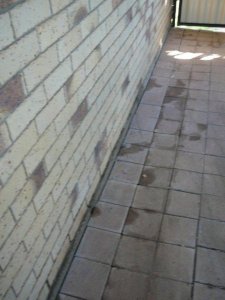
Where paths/cement abuts the home we drill approx 150mm out from the wall and every 100mm to 300 mm along the length of the wall. Then we inject Termiticide at a rate of 10LPM The preferred option where paths abut the home is to cut and remove a strip of concrete 300mm wide to allow cleaning of footings and exposure of possible entry points. We carry a concrete saw on all jobs to allow for this form of treatment.
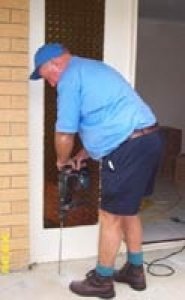
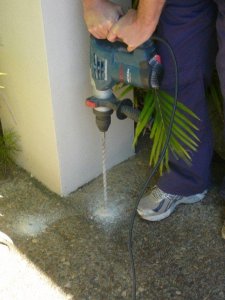

All holes are 12mm and drilled at no more than 300mm apart (most cases 200mm) the holes are then plugged after treatment
In some cases the internal edge of a slab is drilled and injected as well, this is done where there is no external entry point found. This is required where there are construction joints in the slab, cracks in the slab, or entry points around pipes.
Internal treatments often consist of drilling and injecting along one side of walls in the area of activity or along one side of all internal walls. This form of treatment depends on the nature of the infestation and the style of construction of the home. Thus such treatments are assessed on a case per case basis.
In addition to internal drilling and injecting, or in some cases as a stand alone treatment, we use Borates to treat the baseplate/ bottom of stud walls. Small holes are made just above the skirting board, a flexible scope is then used to inspect the wall cavity for damage/ activity. Borates are then injected into the wall cavity. This will kill any termites present in mud packing in the cavity, and protect the lower timbers from attack. Holes are then filled. The is taken on a case per case basis (see Borate Treatments page).

Subfloors
If your home has a subfloor it is very important to treat this area. Subfloors provide ideal conditions for termites to attack homes. Often subfloors are very low, dark, moist, and hardly ever entered by the homeowner. Thus considerable activity can take place undetected. Where the clearance is less than 400 mm the entire soil surface must be treated if the height is above 400mm than barriers must be installed along all walls and around piers.
Our preferred method of treating these areas is to take under the sand to create a barrier on top of the existing soil. This is because unless there is a drainage problem present most subfloor soils are very dry. As such they do not accept the termiticide well, or footings may be exposed. When we bring in the sand we create a clean "block" of treated zone that termites would have to travel through to reach the home. In some cases, there is a drainage problem present if this was the case this would have to be fixed first.
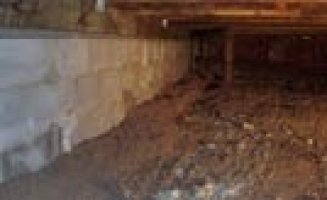
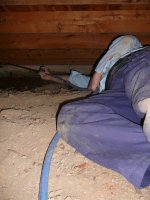
Physical Barriers for Subfloors
A traditional treatment of subfloor areas involves treating the soil around piers and along brick walls with termiticide. There can be problems with this style of treatment, in some cases, stormwater can wash away treated soil if subfloor drainage is poor. Often the soil in the subfloor may have become water repellent, or may just not be suitable to treat (eg shale or steep pitch). In the past, we would import sand/soil and create a treated zone on top of the existing soil, but if there were drainage issues then this could just wash away.
The approach we take now is to use Physical barriers as termite protection.
Steel piers can be protected by Homeguard Blue.
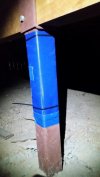
Homeguard Blue is a sheet product impregnated with bifenthrin that both kills and repels termites, this is a highly cost effective once off form of termite protection.
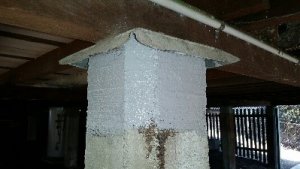

Cement stumps and brick/block can be protected with Term Seal or Termcoat. These products are painted/sprayed onto the masonry to create a zone that repels termites. As with Homeguard, these treatments are very cost effective when compared to traditional Termiticide treatments.
For More Details see Physical Barriers Page.
We provide termite treatments the developing warner area and termite inspections and termite treatments for residential and commercial properties in Brisbane and Caboolture areas. Our termite treatment Caboolture is a growing area. Phone (07) 3261 3287 or 0413 834 887 for a termite inspection at your Brisbane property, Brisbane Northside or Caboolture Property.


